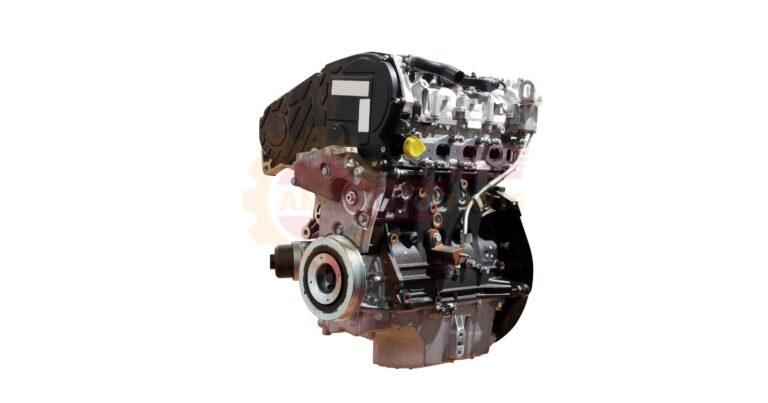Introduction to Auto Parts Inventory Management and Stock Control
Effective inventory management is crucial in the auto parts industry. It ensures that distributors can meet customer demands without overstocking, which ties up capital and increases storage costs. Proper stock control helps maintain a balance between supply and demand, reducing the risk of stockouts and excess inventory.
Managing auto parts inventory presents unique challenges. The vast array of parts, each with different demand patterns and lifecycles, requires precise management. Distributors must navigate issues like part obsolescence, varying supplier lead times, and fluctuating demand, all while maintaining high service levels.
Auto parts inventory management systems are essential tools for distributors. These systems streamline operations by automating stock control processes, providing real-time data, and facilitating better decision-making. They help in tracking inventory levels, managing orders, and forecasting demand, ultimately enhancing efficiency and profitability.
- Key Benefits of Effective Inventory Management:
- Reduces carrying costs
- Improves customer satisfaction
- Enhances operational efficiency
- Challenges in Auto Parts Inventory:
- Managing diverse product lines
- Handling part obsolescence
- Balancing supply and demand
Optimizing Inventory Layout and Organization for Auto Parts
A well-organized warehouse layout is vital for efficient inventory management. Best practices include categorizing parts by size, type, and frequency of use, and ensuring easy access to high-demand items. This reduces picking time and minimizes errors, leading to faster order fulfillment.
Innovative organizing techniques can further enhance stock control. Implementing a bin location system, using color-coded labels, and employing vertical storage solutions are effective strategies. These techniques improve visibility and accessibility, making it easier to track and manage inventory.
Tools and technologies play a significant role in enhancing stock control. Barcode scanners, RFID systems, and inventory management software provide real-time data, enabling accurate tracking and reducing manual errors. These technologies streamline operations and improve overall efficiency.
- Warehouse Layout Best Practices:
- Categorize parts by demand
- Use vertical storage solutions
- Implement a bin location system
- Innovative Organizing Techniques:
- Color-coded labels
- Barcode and RFID systems
- Real-time inventory software
Implementing Smart Inventory Tracking Solutions for Auto Parts
Leveraging data is key to making informed inventory decisions. By analyzing sales trends, seasonal demand, and customer preferences, distributors can optimize stock levels and reduce excess inventory. Data-driven insights enable proactive decision-making, improving overall inventory management.
Advanced tracking technologies are transforming the auto parts industry. RFID tags, IoT devices, and GPS tracking provide real-time visibility into inventory levels and locations. These technologies enhance accuracy, reduce shrinkage, and improve supply chain transparency.
Real-time inventory management systems are essential for modern distributors. They provide up-to-date information on stock levels, order status, and supplier performance. This enables quick response to changes in demand, reducing lead times and improving customer satisfaction.
- Data-Driven Inventory Decisions:
- Analyze sales trends
- Monitor seasonal demand
- Understand customer preferences
- Advanced Tracking Technologies:
- RFID and IoT devices
- GPS tracking systems
- Real-time inventory software
Forecasting and Purchasing Strategies for Auto Parts Inventory
Understanding demand forecasting is crucial in the auto parts industry. Accurate forecasts help distributors maintain optimal stock levels, reducing the risk of stockouts and overstocking. By analyzing historical data and market trends, distributors can predict future demand and adjust inventory accordingly.
Strategic purchasing decisions are vital for maintaining optimal stock levels. Distributors must consider factors like supplier reliability, lead times, and cost when making purchasing decisions. By negotiating favorable terms and diversifying suppliers, they can ensure a steady supply of parts.
Balancing inventory costs and customer satisfaction is a delicate task. Distributors must minimize carrying costs while ensuring product availability. By optimizing stock levels and improving order fulfillment processes, they can achieve this balance and enhance customer satisfaction.
- Demand Forecasting Techniques:
- Analyze historical data
- Monitor market trends
- Use predictive analytics
- Strategic Purchasing Decisions:
- Evaluate supplier reliability
- Consider lead times and costs
- Diversify supplier base
Streamlining Order Fulfillment in Auto Parts Inventory Management
Integrating inventory management with order processing is essential for efficient operations. By automating order processing and linking it with inventory systems, distributors can reduce errors, speed up fulfillment, and improve customer satisfaction.
Optimizing the picking, packing, and shipping stages is crucial for efficient order fulfillment. Implementing batch picking, using automated packing systems, and optimizing shipping routes can significantly reduce processing times and costs.
Handling returns and exchanges efficiently is vital for maintaining customer satisfaction. By implementing a streamlined returns process and using inventory management systems to track returned items, distributors can minimize disruptions and maintain accurate stock levels.
- Order Processing Integration:
- Automate order processing
- Link with inventory systems
- Reduce errors and speed up fulfillment
- Optimizing Fulfillment Stages:
- Implement batch picking
- Use automated packing systems
- Optimize shipping routes
Advanced Techniques in Auto Parts Inventory Management
Embracing automation and robotics in warehousing can significantly enhance efficiency. Automated storage and retrieval systems, robotic picking, and conveyor systems reduce manual labor, increase accuracy, and speed up operations.
The impact of AI and machine learning on stock control is profound. These technologies enable predictive analytics, demand forecasting, and inventory optimization, helping distributors make data-driven decisions and improve overall efficiency.
Continuous improvement strategies are essential for effective inventory management. By regularly reviewing processes, implementing best practices, and adopting new technologies, distributors can enhance efficiency, reduce costs, and improve customer satisfaction.
- Automation and Robotics:
- Automated storage systems
- Robotic picking solutions
- Conveyor systems
- AI and Machine Learning:
- Predictive analytics
- Demand forecasting
- Inventory optimization
Best Practices for Spare Parts Inventory Management
Systematically identifying all parts is crucial for effective spare parts management. By maintaining a comprehensive inventory list and using standardized naming conventions, distributors can improve accuracy and reduce errors.
Effective management of unused parts is essential for minimizing waste and reducing costs. By regularly reviewing inventory, identifying slow-moving items, and implementing disposal or recycling strategies, distributors can optimize stock levels.
Utilizing and maintaining a Bill of Materials (BOM) is vital for efficient inventory management. A BOM provides a detailed list of components required for each product, helping distributors manage stock levels and streamline production processes.
- Identifying All Parts:
- Maintain a comprehensive inventory list
- Use standardized naming conventions
- Improve accuracy and reduce errors
- Managing Unused Parts:
- Regularly review inventory
- Identify slow-moving items
- Implement disposal or recycling strategies
Maximizing Automobile Spare Parts Inventory Management
Key aspects of automobile spare parts inventory management include accurate demand forecasting, efficient stock control, and effective supplier management. By focusing on these areas, distributors can improve efficiency and reduce costs.
Procurement strategies for auto parts are crucial for maintaining optimal stock levels. By negotiating favorable terms, diversifying suppliers, and implementing just-in-time purchasing, distributors can ensure a steady supply of parts.
Balancing stock levels and demand fluctuations is essential for maintaining customer satisfaction. By using demand forecasting, safety stock, and inventory optimization techniques, distributors can achieve this balance and improve service levels. Aftermarket expansion tactics help businesses sell more products to customers who already bought something Companies use Strengthening automotive logistics means making car parts move faster and better from factories to stores
Steering mechanism control helps drivers turn their vehicles It allows cars and other vehicles to change direction smoothly Genuine parts verification helps make sure car parts are real and not fake It protects your car from damage caused by using wrong or low-quality parts
Engine components comparison Different engines have various parts that work together and comparing these parts helps us understand how each engine functions and performs Camshaft valve timing controls when engine valves open and close This timing affects how well the engine breathes and performs
Vehicle oscillation reducers help make car rides smoother They stop the bouncing and shaking that can happen when driving Disc brake analysis helps us understand how well brakes work on vehicles It looks at things like heat friction and wear to make brakes safer and last longer
- Key Aspects of Inventory Management:
- Accurate demand forecasting
- Efficient stock control
- Effective supplier management
- Procurement Strategies:
- Negotiate favorable terms
- Diversify suppliers
- Implement just-in-time purchasing
Auto Parts Inventory Software Solutions
Features to look for in inventory management software include real-time tracking, demand forecasting, and integration with other systems. These features enhance efficiency, reduce errors, and improve decision-making.
Implementing and integrating software systems is crucial for effective inventory management. By choosing the right software and ensuring seamless integration with existing systems, distributors can streamline operations and improve efficiency.
Measuring the ROI of inventory management solutions is essential for evaluating their effectiveness. By analyzing cost savings, efficiency improvements, and customer satisfaction, distributors can determine the value of their investment.
- Software Features:
- Real-time tracking
- Demand forecasting
- System integration
- Implementing Software Systems:
- Choose the right software
- Ensure seamless integration
- Streamline operations
FAQs
What is the best inventory management system for auto parts?
The best inventory management system for auto parts depends on the specific needs of the distributor. Factors to consider include the size of the operation, the complexity of the inventory, and the level of automation required. Popular options include systems that offer real-time tracking, demand forecasting, and integration with other business systems.
How do you manage auto parts inventory?
Managing auto parts inventory involves several key steps. These include accurate demand forecasting, efficient stock control, and effective supplier management. By implementing best practices and using advanced technologies, distributors can optimize inventory levels, reduce costs, and improve customer satisfaction.
What are the 4 types of inventory management?
The four types of inventory management are raw materials, work-in-progress, finished goods, and maintenance, repair, and operations (MRO) inventory. Each type requires different management strategies to ensure optimal stock levels and efficient operations. Understanding these types helps distributors implement effective inventory management practices.






